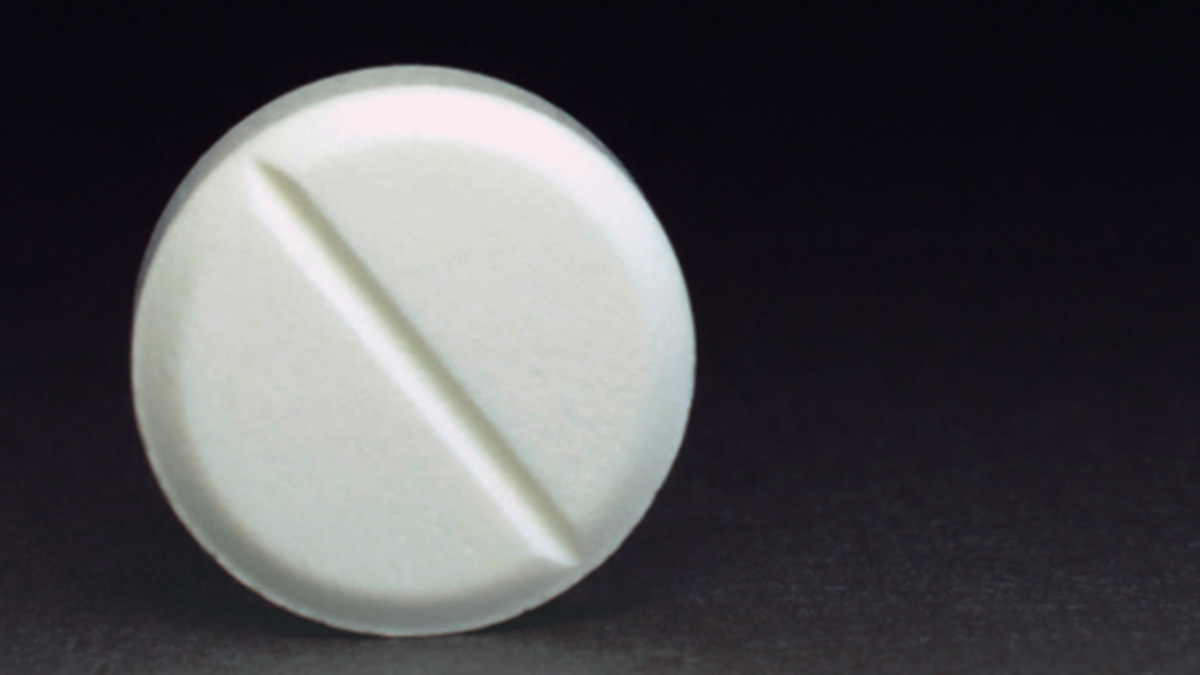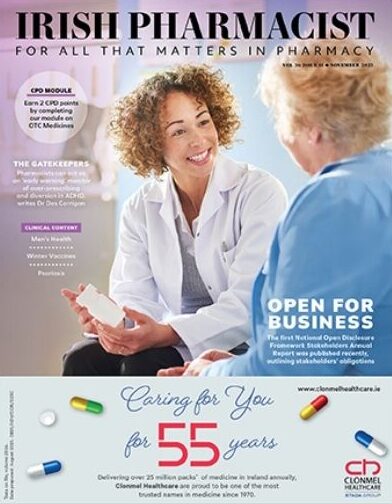The Spanish Flu of 1918-1919 may not be the killer we believe it to be. Long accepted as the most lethal global infection of modern times with total deaths estimated at 50 to 100 million over two winter spikes, it remains an outlier as far as flu deaths are concerned. More recent and dispassionate assessment is considering that, where mortality rates in Europe and especially in the US were indeed high, the global figure calculated by extrapolation in the 1920s might be a gross overestimation of the global impact of this virus, and in reality Europe and the US had something else going on that increased the death toll significantly.
American author and epidemiologist Karen Starko makes a case for the real reason in a 2009 paper Salicylates and Pandemic Influenza Mortality. Published before Covid, her hypothesis is that evidence from the records points to overzealous use of aspirin as the cause of an overinflated number of deaths.
Aspirin (acetylsalicylic acid), first synthesised in 1897 by Felix Hoffman working at the Bayer factory in Germany, was impressively marketed with claims of less toxicity compared to other salicylates – now known to be untrue. As a result, it was widely used in self-care for fever and febrile conditions. In the US, the Bayer aspirin brand lost its patent in 1917, so other manufacturers could – and did – produce cheaper versions, allowing it to be more widely available. Aspirin was recommended as a treatment for flu at the time of that pandemic and indeed The Journal of the American Medical Association advised people to take up to 25 x 325mg tablets a day, more than twice the maximum safe dosage.
Just like heroin, aspirin overdose looks pathologically like flu. People would take it to treat flu and, apparently not recovering, they would continue to take more aspirin until they died of what was assumed to be the flu. Now, more than 100 years later, we have no way of knowing how many deaths from the Spanish Flu were actually caused by aspirin but, according to Starko, it is likely it was significant. Heroin overdose is also implicated but as it was better controlled by prescription at this time its use would not have been as extensive.
Homeopathy
Ironically, homeopathy appeared to have been a successful treatment; of 26,795 cases of influenza treated by homeopathic physicians, there was a reported mortality of 1.05 per cent, while the average mortality of patients treated with conventional medicine (aspirin and/or heroin) was 30 per cent. It is important to appreciate the impact of these findings as it was possibly the biggest boost to the veracity of homeopathic practice ever and possibly still influences the ongoing commitment to homeopathy. Given Starko’s suggestion that aspirin toxicity might have been a significant contributor to flu deaths, then absence of aspirin in treatment – as happened under homeopathic care – would have been protective.
High mortality and pathology
The unprecedented mortality, and particularly the mortality rate among young adults, is incompletely understood. Deaths in the United States peaked with a sudden spike in October 1918. Surveys of eight US cities found that, for every 1,000 people aged 25-29 years, 30 per cent were infected with the influenza virus, and one per cent died of pneumonia or influenza. This three per cent case-fatality rate for flu is huge and has not been replicated by subsequent flu epidemics since (such as 1957 and 1968) or indeed more recently with Covid-19, although Covid is not a flu virus.
High-case mortality was driven by two overlapping pathologies: an early, severe acute respiratory distress syndrome (ARDS), which was estimated to have caused 10 to 15 per cent of deaths; and a subsequent, aggressive bacterial pneumonia ‘superinfection’, present in the majority of deaths.
The 1918 influenza H1N1 virus, in contrast to a conventional human H1N1 influenza virus, infected the lower respiratory tract, produced acute respiratory distress syndrome and an associated atypical immune response induced by overproduction of proinflammatory cytokines. However, it is unlikely that the virus and immune responses alone were responsible for the excessive 1918 deaths. During the autumn of 1918, death and influenza case-fatality rates ranged from 0.58 per cent to 3.3 per cent and 2.1 per cent to 10 per cent, respectively, in the 12 US Army camps with >10,000 cases of influenza or pneumonia each. The wide variation in mortality rates between cities, some of which were close together, was not explained by climate, population density, preventive measures, or other environmental characteristics. These observations suggest the importance of factors related to location rather than the virus itself. Likewise, the unusual mortality rate among young adults remains unexplained.
The hypothesis presented is that salicylate therapy resulted in pulmonary oedema, which contributed to the incidence and severity of early ARDS, subsequent bacterial infection, and overall mortality. Pharmacokinetic data, unavailable in 1918, indicate that the aspirin regimens recommended predispose to severe pulmonary toxicity.
Reyes and Aspirin
Today children and young adults under 18 years cannot be treated with aspirin, even topically, due to the link with Reyes syndrome. From the 1950s to the 1980s, thousands of deaths among children following influenza and other infections were unexplained until studies identified aspirin as the main contributor and aspirin label warnings were followed by a disappearance of the condition. Reye syndrome toxicity (vomiting, hyperventilation, delirium, and coma, with brain swelling and fat in the liver and proximal renal tubules) develops after four days of aspirin use with reported mean daily doses of 25mg/kg. Adults with salicylate toxicity present mainly with abnormal consciousness and respiratory distress.
Starko presents four lines of evidence: pharmacokinetics, mechanism of action, pathology, and the official recommendations for aspirin use at the time.
Aspirin posology
Aspirin has unusual non-linear pharmacokinetics. Increasing the dose from 2g to 4g daily (given every six hours), the total amount of drug in the body at a steady state will increase from 1.3 grams to 5.3 grams, a 400 per cent increase. In 2007, an evidence-based consensus guideline recommended that anybody with an acute ingestion of 6.5 grams of aspirin daily be referred to an emergency department. After multiple doses it is difficult to generalise any dose associated with toxicity because lower daily doses (2g-3g for several days) may lead to toxicity in some patients. In 1918 these large daily doses were common practice.
In the 1960s, scientists learnt why toxicity occurs with intense aspirin therapy: salicylates have unusual and complex pharmacokinetics that predispose to accumulation, rendering both dose and schedule important. When the amount of drug in the body reaches 360mg, the half-life increases as elimination changes from first order to zero order.
In addition to the saturable metabolism, accumulation of salicylate can occur for other reasons, including individual variation in elimination rate, reduced renal excretion and low urine pH. Aspirin combined with sodium bicarbonate increases kidney excretion and such formulations may be protective against toxicity.
Toxicity
Pulmonary oedema in patients with salicylate toxicity is well documented. Salicylate also depresses the lungs’ mucociliary transport system. Autopsy reports by pathologists during the 1918 flu pandemic describe extremely wet, sometimes haemorrhagic lungs in early deaths. Indeed, examining the lungs of dead soldiers, a US pathologist was convinced that the infection was new as the pathology was very different to what he had seen before. Brain weight also increased by 100-200g in 50 per cent of patients, most likely indicating cerebral oedema; cerebral bleeding was common. These pathology findings are consistent with aspirin toxicity.
Aspirin marketing
After Bayer was charged with violating the Trading with the Enemies Act in August 1918, advertisements encouraged confidence in aspirin by new US producers. In the US, official recommendations for aspirin often suggested doses that predispose to toxicity. Aspirin sales more than doubled between 1918 and 1920.
Conclusion
Starko makes a compelling, if yet unproven, case against aspirin and few are challenging her. Since the 1950s aspirin has fallen out of favour in spite of the vigorous and aggressive marketing strategies of big pharma. In the 1918-1919 flu pandemic one of the enduring issues was the average age of death of those infected: 23 years. Compare this to the average age of death from Covid-19, which was 82 years. Young adult mortality might now be explained by the willingness of this age group to use the then, new, recommended high-dose aspirin therapy. In addition, it must be remembered that these young people were in regimented treatment settings (the military), which assured a tragic compliance.
Contributor Information
Terry Maguire owns two pharmacies in Belfast. He is an honorary senior lecturer at the School of Pharmacy, Queen’s University Belfast. His research interests include the contribution of community pharmacy to improving public health.



